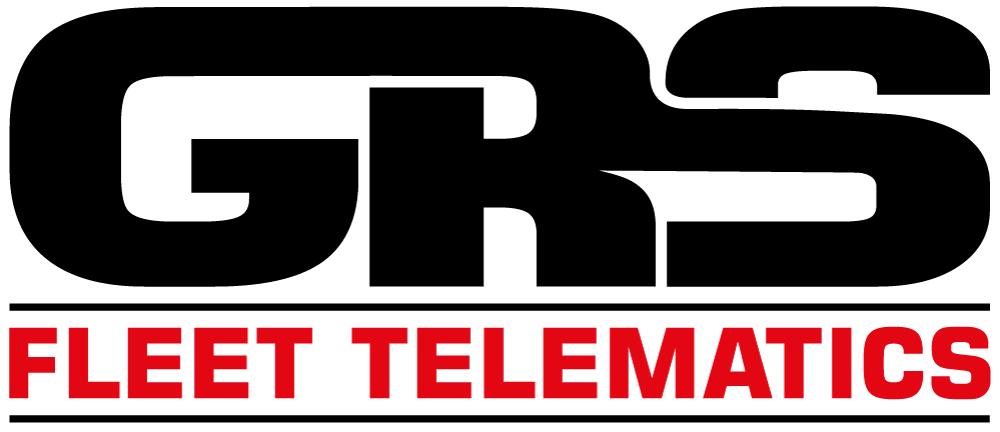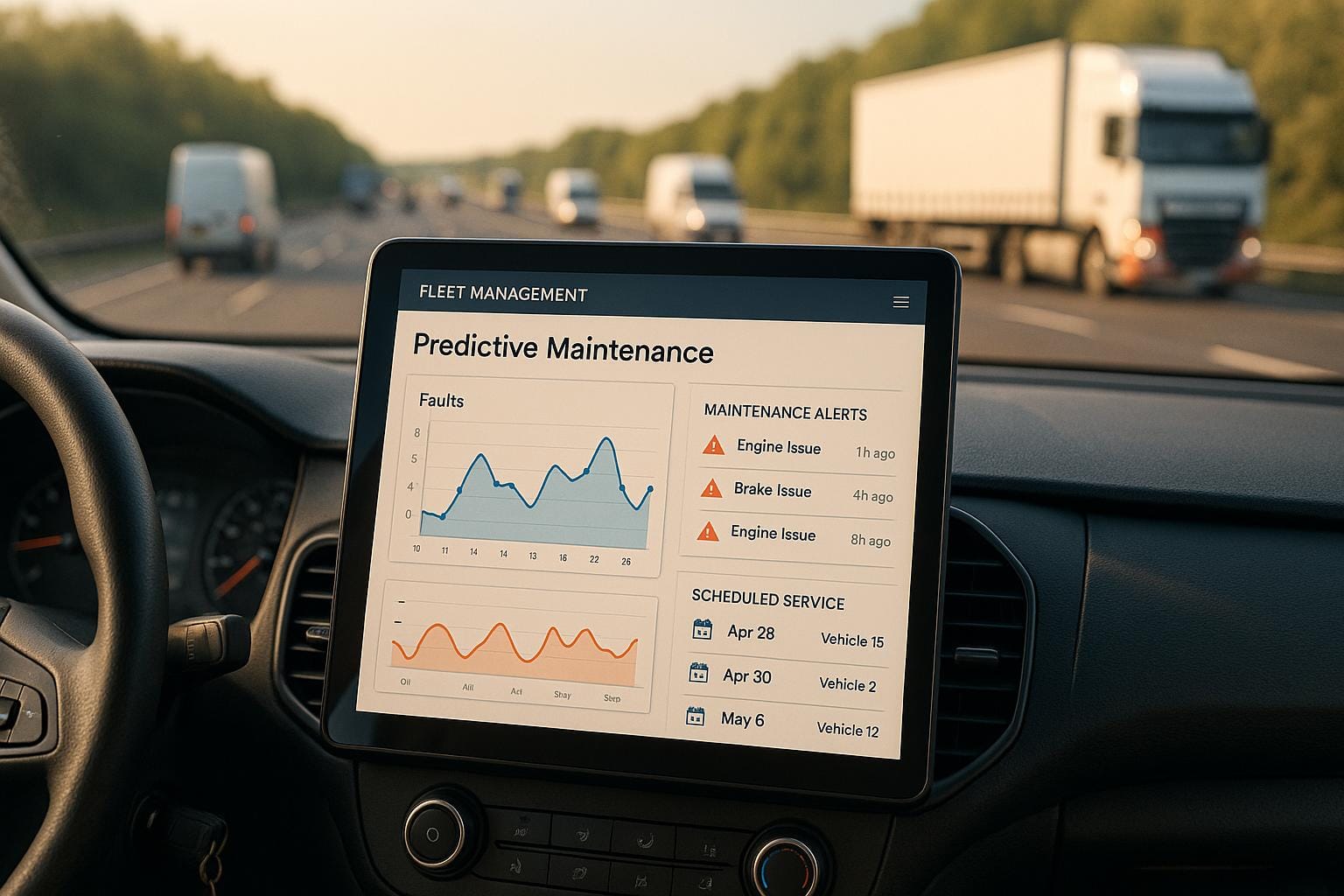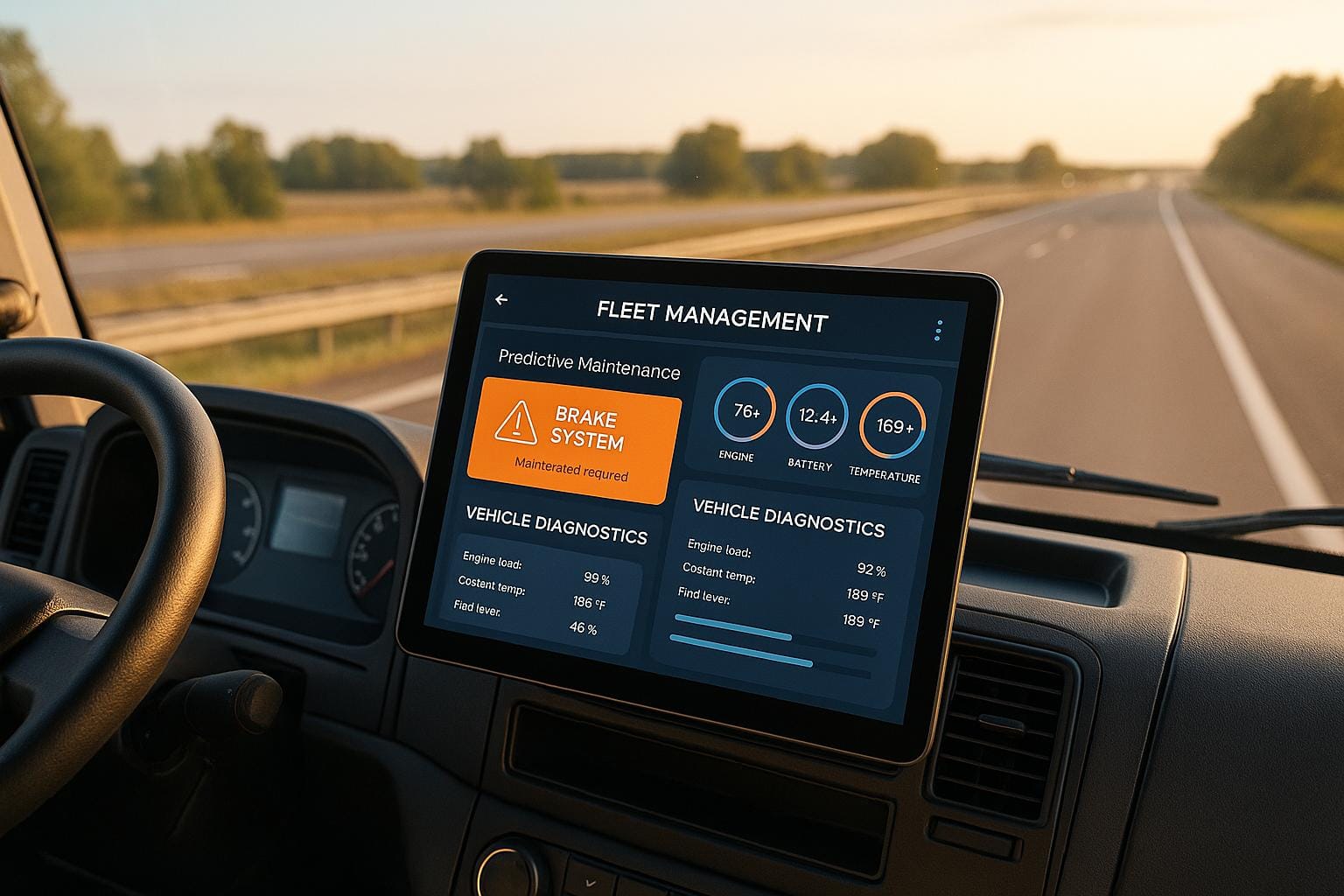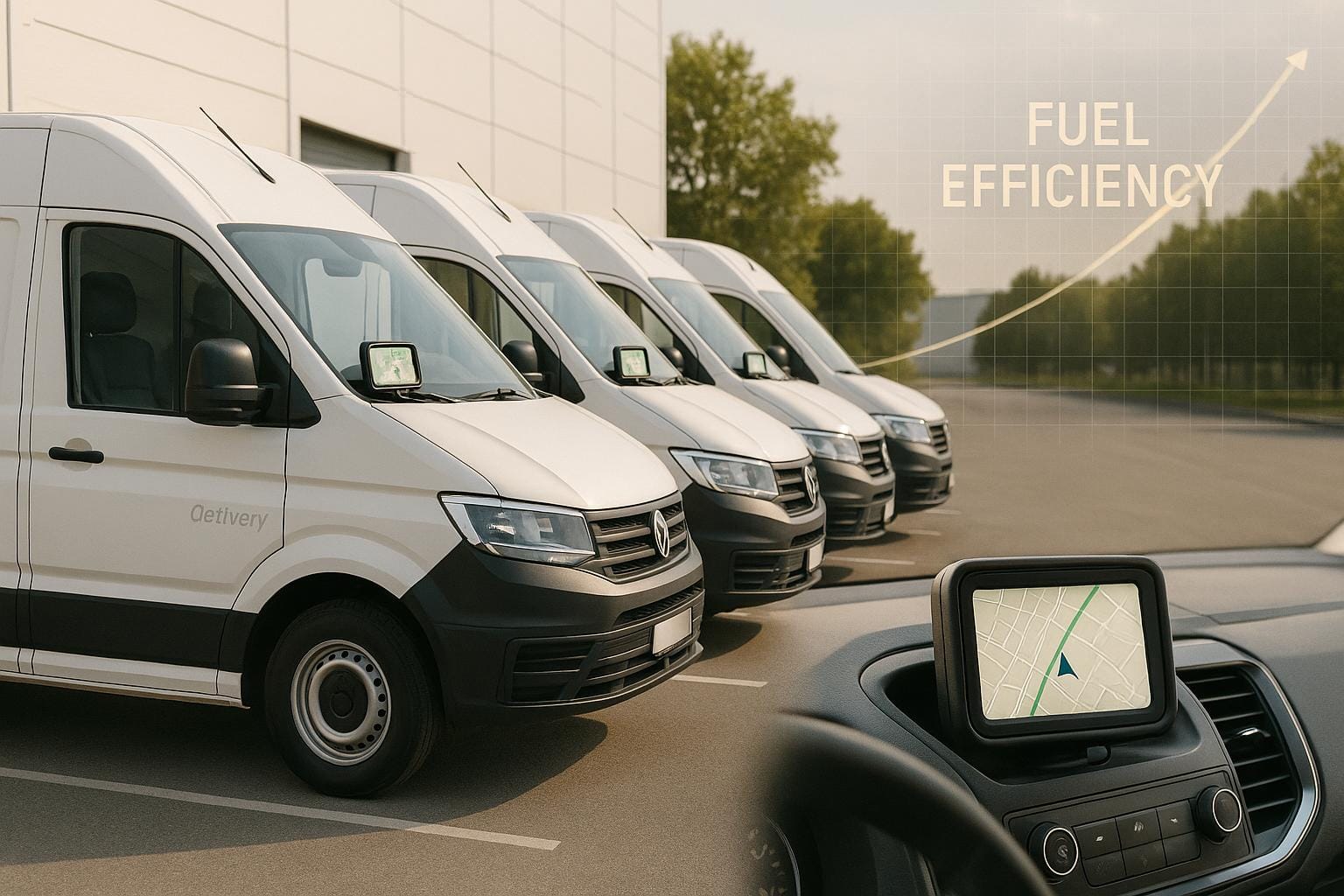Short answer: It depends on your fleet size and needs. Here's a quick breakdown:
- Budget trackers: Cost less (£7.50/month) and provide basic location tracking. Ideal for small fleets (1–20 vehicles) with minimal needs.
- Premium trackers: Cost more (£20+/month) but offer advanced features like real-time updates, theft prevention, and driver behaviour analysis. Best for larger fleets (50+ vehicles) or businesses prioritising security and efficiency.
Quick Comparison
| Tracker Type | Fleet Size | Key Features | Monthly Cost | Upfront Cost |
|---|---|---|---|---|
| Budget | 1–20 vehicles | Basic tracking, route mapping | From £7.50 | From £50 |
| Advanced | 21–50 vehicles | Live tracking, diagnostics | From £15 | Around £200 |
| Premium | 50+ vehicles | Theft prevention, driver analysis | From £20+ | From £300+ |
Key Takeaways:
- Savings: Premium trackers can cut fuel costs by 15%, reduce accidents by 20%, and secure insurance discounts of up to 25%.
- Security: Premium options have a 91% recovery rate for stolen vehicles, compared to 67% for budget trackers.
- Efficiency: Premium systems optimise routes, monitor driver behaviour, and support fleet growth.
Bottom line: For small fleets with basic needs, budget trackers work fine. But for larger fleets or businesses prioritising security and savings, premium trackers are a smart investment.
Which tracker is best for your motorhome? With GBSBob
Budget vs. Premium Van Trackers Explained
Building on the earlier discussion of costs, let’s dive deeper into the differences between budget and premium van trackers. These options can generally be grouped into three tiers: entry-level, advanced, and expert. Each tier is tailored to meet the needs of different fleet sizes and offers a range of features at varying price points.
Price Ranges and Features
Here’s a quick breakdown of what you can expect from each tier in terms of pricing and capabilities.
- Budget trackers: Priced around £50 for the device and £7.50 per month, these are great for small fleets of 1–20 vehicles. They focus on basic functions like route mapping and fuel tracking. Most of these trackers use passive technology, collecting data periodically rather than in real time. Installation is straightforward, often using plug-and-play OBD-II connections that don’t require professional fitting.
- Advanced trackers: Designed for fleets of 21–50 vehicles, these systems cost about £200 upfront and £15 per month. They offer live route tracking, diagnostics, and reporting. This makes them a practical choice for businesses that need more features than budget options provide but aren’t quite ready to invest in enterprise-level systems.
- Premium trackers: Built for large fleets of 50+ vehicles, these trackers cost upwards of £300 for the hardware and £20 per month. They come packed with advanced features like real-time driver management, live tracking, and detailed operational reporting. These systems use active tracking technology, providing instant updates on vehicle location, driver behaviour, and efficiency.
| Tier | Fleet Size | Key Features | Monthly Cost | Hardware Cost |
|---|---|---|---|---|
| Entry Level | 1–20 vehicles | Route mapping, fuel tracking | From £7.50 | From £50 |
| Advanced Level | 21–50 vehicles | Live tracking, vehicle diagnostics, reporting | From £15 | Around £200 |
| Expert Level | 50+ vehicles | Driver management, detailed reporting | From £20 | From £300+ |
Main Differences
The differences between budget and premium trackers go beyond price - they also vary in build quality, tracking accuracy, and security features.
- Tracking and Connectivity: Budget trackers typically provide less frequent updates and can face connectivity issues in areas with poor mobile coverage. Premium systems, on the other hand, offer more frequent updates and reliable connections due to superior antenna design and network redundancy.
- Installation and Tamper Resistance: Budget models are easy to install with plug-and-play OBD-II connections, but they’re more vulnerable to tampering. Premium trackers require professional hardwiring, which not only improves security but also ensures the system is harder to disable.
- Security Features: Basic trackers might include simple geofencing notifications, but premium systems take it a step further with advanced geofencing (covering multiple zones), vehicle immobilisation, and 24/7 monitoring services. For businesses prioritising theft prevention, these features can be game-changing.
- Customer Support: Budget options often limit support to online resources or basic helpdesks. In contrast, premium systems provide dedicated account managers, detailed training, and priority technical support. This level of service can be especially valuable for larger fleets where downtime could lead to significant losses.
The decision between budget and premium trackers ultimately depends on your fleet’s size, operational needs, and security concerns. Smaller operations with straightforward tracking requirements may find budget options sufficient. However, larger fleets with more complex needs will likely benefit from the enhanced features and support offered by premium solutions. These distinctions play a key role in evaluating the overall value of each option, a topic we’ll explore further in the cost-benefit analysis.
Feature Comparison: Budget vs. Premium Van Trackers
When deciding between budget and premium van trackers, it's essential to weigh factors like tracking accuracy, security features, and fleet management tools. These differences can have a substantial impact on how efficiently and safely your fleet operates. Let’s break down the key distinctions.
Tracking and Monitoring Features
The frequency of location updates is a major differentiator. Budget systems typically refresh every two minutes, while premium trackers can provide updates as often as every 15 seconds. Premium options also incorporate multi-network backup technology, ensuring uninterrupted tracking even in areas with weak signal coverage.
GPS accuracy is another area where premium systems excel. For fleets covering long distances or operating in remote regions, premium long-range GPS trackers are much more reliable. Cellular GPS trackers, common in high-end systems, deliver faster and more precise real-time location data compared to budget alternatives. While cellular trackers perform well in areas with strong mobile networks, satellite-based premium models ensure consistent performance even in remote locations.
Security Features
Security is one of the most striking differences between budget and premium trackers. Premium systems often include advanced features like immobilisers, geofencing, and driver ID verification. These systems boast a stolen vehicle recovery success rate of 91%, far surpassing the 67% average for budget trackers.
Premium trackers also feature tamper detection, which sends alerts if someone tries to disconnect or remove the device. For instance, a construction company in the Midlands recovered a stolen van within hours thanks to their premium system. Similarly, a plumbing business in London was alerted when a van left its designated zone after midnight, allowing local authorities to intervene promptly.
Fleet Management Tools
Premium trackers go beyond basic location history and speed alerts, offering tools that can transform fleet management. These include eco-driving scores, advanced API integration, and features like CAN Bus and fuel data analysis. They also provide accident analysis and detailed driver safety analytics, helping fleet managers optimise operations and cut costs. Additional tools like task management, automated servicing schedules, and licensing reminders further enhance efficiency.
The financial advantages of premium systems can be substantial. For example, wired trackers with accelerometers improve security and monitor driver behaviour, saving about £1,000–£2,000 per vehicle annually. Many fleet managers see a return on investment in as little as 90 days.
Michael Borg, Managing Director of Borg Manufacturing, shared his experience with a premium system:
"We have experienced considerate driving safety improvements in the two years since we implemented the MiX by Powerfleet solution. In particular, our crash rates and associated repair and maintenance costs have dropped considerably ensuring a safer workplace."
– Michael Borg, Managing Director, Borg Manufacturing
Choosing between budget and premium trackers ultimately depends on your fleet's needs. Understanding the differences helps you make an informed decision, ensuring you get the precision, security, and tools your operations require. These enhancements not only improve efficiency but also pave the way for evaluating the overall cost-effectiveness of premium solutions.
Cost-Benefit Analysis
When considering van tracking systems, the costs go beyond just the upfront price of hardware, subscriptions, and installation. A proper cost analysis includes these factors alongside potential savings over a three-year period, giving a clearer picture of the overall financial impact.
3-Year Total Costs for UK Fleets
For a fleet of 10 vehicles, the cost differences between budget, mid-range, and premium tracking solutions are quite pronounced. Budget options like the Crystal Ball S5 cost approximately £199 per vehicle (including installation) and have monthly subscriptions of about £15.63. Over three years, this translates to an initial outlay of £1,990 for the fleet, with annual subscription costs totalling £1,875 - bringing the overall three-year cost to around £7,615.
Mid-range systems, such as the SmarTrack 5, come with a higher upfront cost of around £499 per vehicle. Premium systems like Meta Trak are priced at approximately £799 per vehicle, which includes the first year’s subscription. Some premium bundles can cost as much as £8,200 in the first year, with recurring annual fees of around £4,200.
| System Type | Initial Cost (10 vehicles) | Annual Subscription | 3-Year Total |
|---|---|---|---|
| Budget (Crystal Ball S5) | £1,990 | £1,875 | £7,615 |
| Mid-Range (SmarTrack 5) | £4,990 | £1,200 | £8,590 |
| Premium (Meta Trak) | £7,990 | £1,800 | £13,390 |
While these direct costs are significant, they can be offset by insurance savings and other benefits.
Insurance Discount Differences
Insurance savings can make a notable difference in overall costs. Budget trackers often secure discounts of 5% to 12% on commercial vehicle insurance, whereas premium systems, especially those approved by Thatcham, can achieve reductions of 15% to 25%. For a fleet with annual insurance costs of £15,000, an 8% discount from a budget tracker could save about £1,200 per year. On the other hand, a 20% discount from a premium system might reduce premiums by around £3,000 annually - adding up to an extra £5,400 in savings over three years.
Premium systems that include dash cams can attract additional insurance discounts of 10–15%. Insurers value the evidence these cameras provide in accident claims, making them a worthwhile investment.
Beyond insurance, premium systems offer further financial protection through theft recovery features.
Theft Recovery and Cost Prevention
Premium tracking systems provide significant cost-saving benefits by reducing theft risks and ensuring high recovery rates. These systems boast recovery rates of around 96%, helping to avoid the financial burden of vehicle loss. Between 2016 and 2019, over 43,000 vans were stolen in the UK, and more than half would not have been recovered without tracking technology.
Features like remote immobilisation and driver identification add another layer of security, ensuring that only authorised personnel can operate the vehicles. Without these measures, the costs of replacing stolen vehicles and dealing with downtime can quickly escalate. Considering that one van is stolen every eight minutes in the UK, with only one in four recovered, the superior recovery rates of premium systems can mean the difference between a manageable setback and a major financial hit.
Fleet Efficiency and Growth Impact
Tracking systems go beyond just showing where your vehicles are - they're a game-changer for improving fleet efficiency and supporting business growth as operations scale up.
Efficiency Gains
Basic budget trackers can help cut mileage by providing simple location and driver data, but their impact on efficiency is limited.
On the other hand, premium tracking systems take efficiency to a whole new level. Research shows that comprehensive GPS tracking systems can boost productivity by 15–20%. These systems automate tasks that would otherwise require manual effort, such as generating detailed performance reports or sending instant alerts when issues arise.
Fuel analytics is another standout feature of premium systems. By identifying inefficient driving habits, businesses can save an average of £660 per vehicle annually. These savings don’t just cut down running costs - they also help speed up the return on investment. Additionally, proactive maintenance scheduling minimises downtime and extends the lifespan of vehicles, which is especially critical for companies looking to expand their operations.
In short, these efficiency improvements set the stage for scalable growth, making it easier to manage larger fleets without sacrificing performance.
Supporting Fleet Growth
Premium tracking platforms are built with growth in mind, capable of managing fleets with over ten thousand assets.
With the light commercial vehicle market growing by 8.4% year-on-year, businesses need tracking systems that can keep up with their expansion. Premium platforms often include seamless API integration, allowing fleet management data to connect effortlessly with HR, finance, and job management systems. They also feature advanced driver behaviour tools that evaluate factors like smoothness, safety, and cleanliness, ensuring service quality remains consistent as fleets grow.
For companies planning to scale, premium tracking systems provide the insights needed to make smart, data-driven decisions. By analysing vehicle performance, route efficiency, and operational costs, fleet managers can identify the best opportunities for expansion while steering clear of costly errors. These tools make growth not just possible, but manageable and efficient.
Conclusion: Is Premium Worth the Extra Cost?
After weighing up the costs, security features, and efficiency gains, the answer becomes clearer: the choice between budget and premium trackers hinges on the size of your fleet and your operational priorities.
For smaller fleets, budget trackers priced between £10–30 per month can handle basic GPS tracking and geofencing needs. However, with van thefts in the UK surpassing 11,000 annually - and South Yorkshire alone reporting 14.07 stolen vans per 1,000 registered - the advanced security features offered by premium trackers become increasingly hard to overlook. Additionally, many insurance-approved premium trackers can significantly reduce insurance premiums.
Premium options bring more to the table than just theft prevention. They offer higher vehicle recovery rates - up to 95% - and operational perks like optimised routing. These benefits, combined with potential insurance discounts of up to 20%, can help offset the higher monthly fees over time. For larger fleets, these savings and efficiencies scale up, delivering faster returns on investment.
For businesses poised for growth, premium trackers provide a level of scalability that budget options simply can’t match. They ensure your system can handle fleet expansion while delivering enhanced security and operational improvements. While budget trackers may work for basic needs, premium solutions offer a combination of long-term savings, improved efficiency, and future-ready scalability. For growing fleets, premium trackers emerge as a smart, forward-thinking investment.
This conclusion reflects the detailed cost and efficiency analysis discussed earlier.
FAQs
How can premium van trackers help save on fuel and improve driver safety?
Premium van trackers are a smart way to save on fuel and improve driver safety, thanks to features like real-time tracking and route optimisation. These tools help pinpoint the most efficient routes, steer clear of traffic, and minimise idling time. The result? Lower fuel consumption that could save fleets hundreds of pounds per vehicle every year.
But that's not all. These trackers also keep an eye on driver habits - things like speeding, harsh braking, and rapid acceleration. By promoting safer, more cautious driving, they help reduce accident risks. Plus, many insurers offer discounts to fleets that show improved safety records, adding another layer of savings. Over time, the combination of fuel efficiency and safety benefits makes premium van trackers a smart, cost-effective move for businesses.
What insurance benefits can premium van trackers offer compared to cheaper options?
Premium van tracking systems come with notable insurance perks, including the possibility of saving up to 30% on premiums. These systems not only help deter theft but also encourage safer driving habits - factors that insurers typically reward with reduced costs.
On top of that, vans equipped with insurance-approved trackers might be eligible for additional discounts, often around 20%, as they are considered lower-risk. Choosing a premium tracker can translate into substantial savings over time while also providing added reassurance for managing and securing your fleet.
Can premium van trackers support fleet expansion, and what features make them scalable?
Yes, premium van trackers are built to accommodate fleet growth, making them a smart option for businesses on the rise. They come packed with features like real-time GPS tracking, customisable dashboards, and automated reporting, all of which help you manage multiple vehicles and assets seamlessly from one platform. This simplifies operations and keeps everything running smoothly as your fleet expands.
Adding new vehicles is usually a hassle-free process, often not requiring any extra hardware or software updates. With advanced analytics and reporting tools, these systems also help you make informed decisions - whether it’s about optimising routes, boosting efficiency, or cutting down costs. For businesses looking to scale, premium van trackers offer a reliable and scalable solution.




